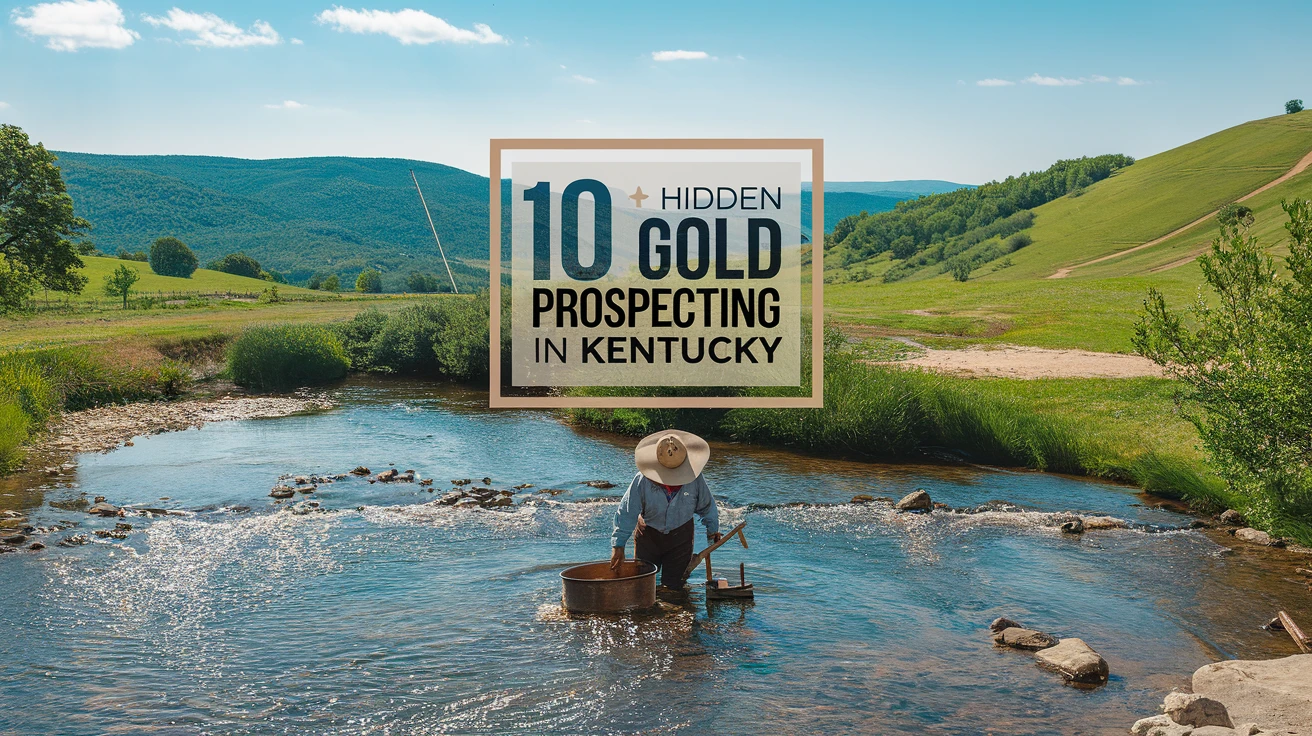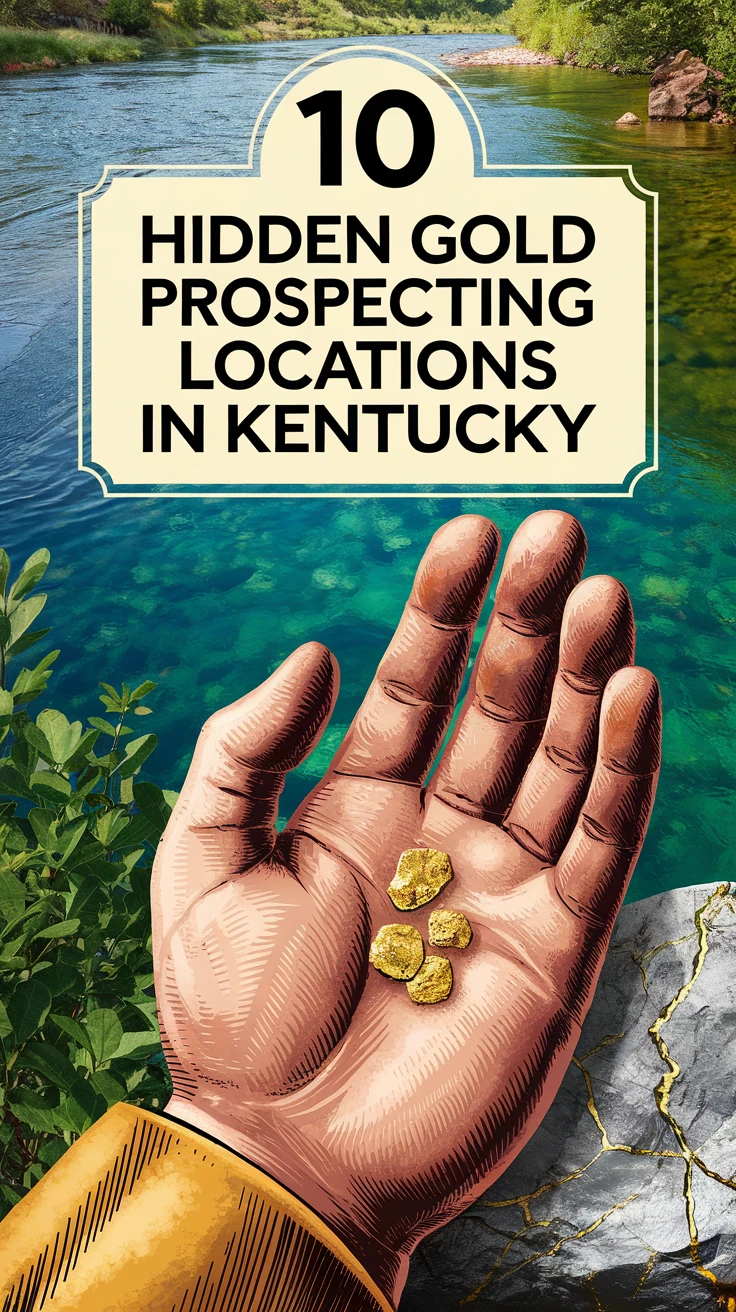
Kentucky might not be the first state that comes to mind when you think about gold prospecting, but hidden within its rolling hills and winding streams lie countless opportunities for ambitious prospectors. While the Bluegrass State may not have experienced the famous gold rushes of California or Alaska, its geological history and unique mineral deposits make it an intriguing destination for both novice and experienced gold seekers. In this comprehensive guide, we’ll explore ten promising locations where you might strike it lucky in Kentucky, along with essential tips and techniques to maximize your chances of finding that elusive yellow metal.
The Golden History of Kentucky
Before we dive into specific locations, it’s crucial to understand Kentucky’s gold-bearing history. While never a major gold-producing state, Kentucky has yielded numerous small gold deposits, particularly in areas where ancient glaciers deposited gold-bearing materials from regions further north. Most of Kentucky’s gold is found in the form of placer deposits, which are accumulations of gold and other heavy minerals concentrated in stream sediments.
| Historical Period | Gold Discovery Events | Impact on Local Economy |
|---|---|---|
| Pre-1800s | Native American artifacts containing gold | Limited cultural significance |
| 1800-1850 | First documented gold findings | Minor local interest |
| 1850-1900 | Small-scale mining operations | Supplemental income for farmers |
| 1900-Present | Recreational prospecting | Tourism and hobby activities |
Essential Equipment for Kentucky Gold Prospecting
- Gold pan (12-14 inch recommended)
- Sluice box for larger operations
- Classifier screens (1/4 inch and 1/8 inch)
- Shovel and pick
- Crevicing tools
- Snuffer bottle
- Vials for gold storage
- GPS device
- First aid kit
- Weather-appropriate clothing
Seasonal Prospecting Equipment Recommendations
| Season | Essential Equipment | Optional Equipment |
|---|---|---|
| Spring | Rubber boots, rain gear | Portable shelter |
| Summer | Sun protection, cooling towels | Lightweight sluice |
| Fall | Layered clothing, headlamp | Metal detector |
| Winter | Insulated gear, hand warmers | Heated shelter |
Top 10 Gold Prospecting Locations in Kentucky
1. South Fork of the Cumberland River
The South Fork stands out as one of Kentucky’s premier gold prospecting locations. The river’s bends and drops create natural collection points for placer gold. Look for areas where the water velocity changes, particularly after heavy rains when new material gets deposited. I’ve had particular success focusing on the gravel bars during late summer when water levels are lower.
2. Red River Gorge Area
While famous for its rock climbing, the Red River Gorge also holds potential for gold prospecting. The ancient river channels have carved through mineral-bearing rocks, creating numerous potential gold traps. Focus on the areas where tributary streams enter the main river channel.
3. Knox County Streams
The streams in Knox County have historically produced fine gold, particularly in areas where they cut through old glacial deposits. The best results typically come from working the inside bends of streams where slower water allows heavy minerals to settle.
4. Daniel Boone National Forest
With proper permits, the Daniel Boone National Forest offers numerous prospecting opportunities. Focus on areas where streams have exposed bedrock and created natural sluices. Remember to check local regulations as some areas may be restricted.
5. Rockcastle River
The Rockcastle River’s geological formation makes it an excellent location for gold prospecting. Look for areas where the river has cut through ancient rock formations, creating natural gold traps in bedrock cracks and crevices.
6. Little River System
This river system in western Kentucky offers promising prospects, especially where it crosses geological fault lines. The best results often come from working the gravel bars and inside bends during low water periods.
7. Green River Tributaries
The tributaries feeding into the Green River often contain placer gold deposits. Focus on areas where these smaller streams enter the main river, as these junction points frequently trap gold particles.
8. Cumberland Falls Area
Below Cumberland Falls, the turbulent water action has created numerous gold traps over millennia. Work the gravel bars and bedrock cracks downstream from the falls, being mindful of park regulations and safety concerns.
9. Big South Fork Area
This region features numerous streams with gold-bearing potential. The area’s geology includes ancient river channels that have concentrated placer deposits over time. Look for areas where bedrock is exposed in stream beds.
10. Kentucky River Watershed
Various tributaries of the Kentucky River have yielded gold, particularly in areas where they cut through glacial deposits. Focus on locations where the water flow slows and creates natural collection points for heavy minerals.
Best Practices and Safety Tips
- Always obtain necessary permits before prospecting
- Inform someone of your prospecting location
- Carry basic first aid supplies
- Check weather forecasts before heading out
- Respect private property boundaries
- Practice environmental stewardship
- Work with a partner when possible
- Maintain awareness of local wildlife
Conclusion
While Kentucky may not rival the famous gold fields of the western United States, its diverse geology and numerous waterways offer exciting opportunities for prospectors willing to put in the time and effort. Success in Kentucky gold prospecting requires patience, proper technique, and a good understanding of where to look. Remember to always follow local regulations, respect private property, and practice environmental responsibility while pursuing your golden dreams in the Bluegrass State.
Key Takeaways
- Kentucky’s gold deposits are primarily found in placer deposits along waterways
- Proper equipment and techniques are essential for successful prospecting
- Always obtain necessary permits and permissions before prospecting
- The best prospecting locations often correspond with historical mining areas
- Seasonal conditions can significantly impact prospecting success
Frequently Asked Questions
Do I need a permit to prospect for gold in Kentucky?
Yes, you typically need permits for prospecting on public lands. Contact the Kentucky Department of Natural Resources for specific requirements and restrictions.
What is the best time of year for gold prospecting in Kentucky?
Late summer and early fall are often ideal, as water levels are lower, making it easier to access stream beds and gravel bars.
What type of gold can I expect to find in Kentucky?
Most gold found in Kentucky is fine placer gold, with occasional small nuggets. The gold is typically 20-23 karats in purity.
Can I use a metal detector for gold prospecting in Kentucky?
Yes, metal detecting is allowed in many areas, but specific regulations may apply. Always check local rules before using any equipment.
Are there any gold prospecting clubs in Kentucky?
Yes, several prospecting clubs operate in Kentucky, offering resources, training, and group outings for members.
What basic equipment do I need to start prospecting?
Beginners should start with a gold pan, classifier, shovel, and basic safety equipment. Additional tools can be added as experience grows.
Is it legal to sell gold found in Kentucky?
Yes, gold you legally prospect can be sold, but keep records of where and when it was found for tax purposes.
How much gold can I expect to find in a day?
Yields vary greatly, but most recreational prospectors find small amounts ranging from a few flakes to several grams per day.
Are there any restricted areas for prospecting in Kentucky?
Yes, some areas including state parks, private property, and certain protected watersheds are off-limits to prospecting.
What safety precautions should I take while prospecting?
Always work with a partner, carry emergency supplies, watch for changing weather conditions, and be aware of local wildlife and terrain hazards.

